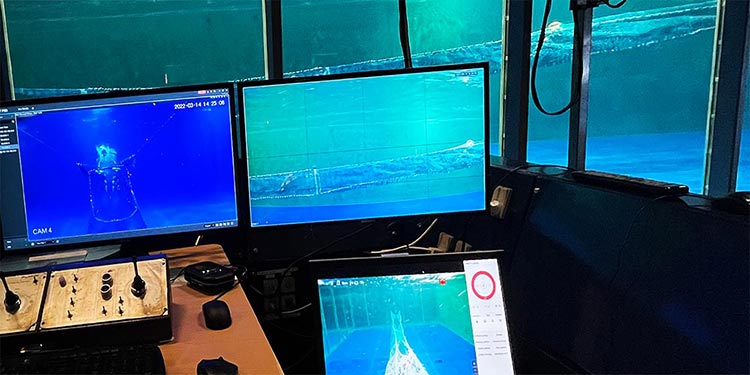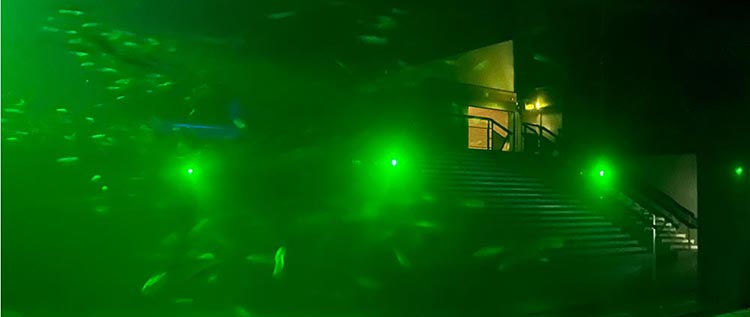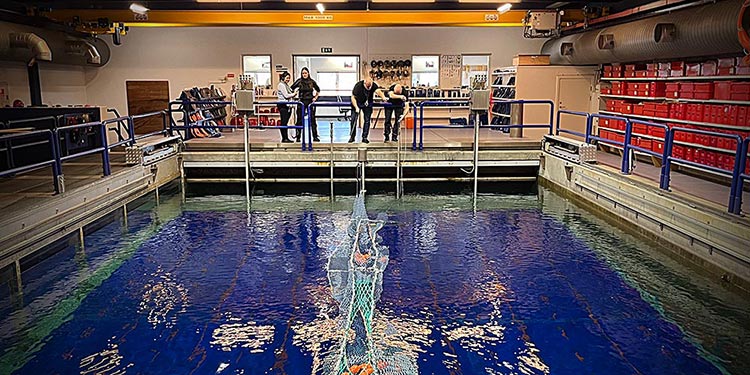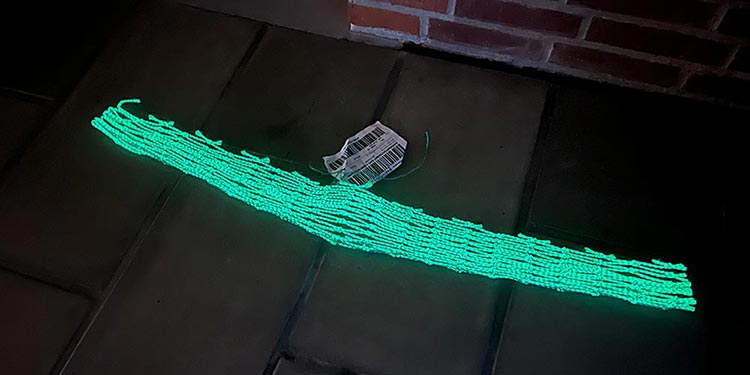The sound of shoals of fish swimming away when light is lowered into their tank - this is something that listeners can hear in a BBC radio report from DTU Aqua in Hirtshals. Here, the international radio station visited the other day to cover technology against bycatch.
Light conveyed in sound. In short, that was what happened at DTU Aqua in Hirtshals this week. The BBC World Service was visiting to make a report that would be part of an episode of the radio program "People Fixing the World". The episode was about, among other things, how the use of LED technology and other artificial light can reduce unwanted by-catch in the fishery.
Researcher Junita Karlsen is the research coordinator for the EMFF project MatRedEx and was to present to the radio journalist how luminescent fishing nets are used to better understand how cod perceive a trawl net:
“My first thought when the BBC World Service radio station contacted us was that it would be challenging because light is a visual experience. It was about taking the listeners into the research through sounds. But it is exciting for the project to disseminate this research to millions of listeners all over the world, ”says Junita Karlsen.
Read more about the MatRedEx-projektet
Junita Karlsen had allied herself with SINTEF Ocean and the North Sea Oceanarium, so that the BBC World Service, in addition to an experimental set-up with its own eyes and ears, could experience the luminous fishing technologies in operation.
In the test tank at SINTEF, a full-scale fishing bag was rolled out into the water and viewed through the huge observation window. The BBC journalist recorded sounds of the gear that was put out in the test tank, and Junita Karlsen told the journalist about how LED lights have been tested in trawls and can be combined with mechanical selection devices to improve the cod's ability to escape the gear.
The BBC World Service also saw Junita lower LED lights of various colors into dark aquarium tanks in the North Sea Oceanarium. Here, on the occasion of the day, they had been allowed to enter after closing time, so that Junita could demonstrate the response of different fish species to the light.
Inside, the BBC recorded the sound of shoals swimming away when the light was lowered into their tank, the sound of the cylinder with the trawl mounted, rotating around an aquarium with cod in it, switches being turned on and doors opening into the various places.
Large by-catch avoided without effect on fishing
"It was absolutely amazing to be allowed to immerse a line of LED lights in the large Oceanarium tank!" tells Junita Karlsen and explains more about the demonstration, which was a simulation of how artificial light can be used in net fishing, to reduce unwanted catch:
"This simulation was based on the research of some American colleagues, who using LED lights reduced the total biomass of the unwanted catch by more than 60 percent, without affecting the species that the fishermen want to catch."
The American research colleagues observed a markedly lower amount of sea turtles, sharks, whitefish and giant squid. According to Junita Karlsen, the reduction of such diverse bycatch is quite interesting when you consider how different the animal groups' views are.
Towing resistance reduced by 10%
"This is relevant now that cod quotas are low and, for example, must be avoided in the Norway lobster fishery, which uses gear with relatively small meshes."
Researcher, DTU Aqua, Junita Karlsen
In the research project MatRedEx, which the BBC World Service came to report on, a design, DragLess, has also been tested, which aims to reduce towing resistance and thus fuel consumption. The results that the researchers have from that design show that the drag resistance was reduced by 10%.
Derudover er der udviklet og testet et design i forlængerstykket, der ændrer på vandgennemstrømningen i redskabet:
In addition, a design has been developed and tested in the extension piece that changes the water flow in the implement:
“The intention is to create zones with a small water flow to help cod escape the gear. Previous studies in the VISION project show that cod are searching towards so-called low flow zones. Here, models made on the basis of our measurement results show that we have succeeded in creating a low flow zone in the tool, ”says Junita Karlsen.
In the EHFF VISION project, Junita Karlsen was involved in investigating, among other things, whether LED lights could be used to separate fish from Norway lobsters in different catch bags and then offer them different mesh types and thus the opportunity to escape the gear:
"It is relevant now that the cod quotas are low and, for example, should be avoided in the Norway lobster fishery, which uses gear with relatively small meshes," says Junita Karlsen.
The BBC World Service would also like to know if it may be too late to save fish stocks? Here, Junita Karlsen referred to the EHFF Fast Track projects, which DTU Aqua has worked on, how fishermen can be involved so that the process of developing gear that reduces by-catch can go faster.
The research project MatRedEx started in 2020 and expires according to plan in 2022.
Photos: Martin Nielsen, DTU Aqua



